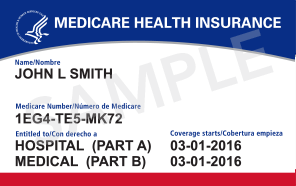Does the estate of a deceased taxpayer who receives an
economic impact payment (i.e., Covid-19 stimulus payment) after the decedent died,
have to return the monies?
The link to the IRS web page
on stimulus payments is:
https://www.irs.gov/coronavirus/economic-impact-payment-information-center#collapseCollapsible1588957539082
Question No. 10 was added on
May 6, 2020. It provides:
Q: Does someone who has died qualify for the
payment?
A10. No. A Payment made to
someone who died before receipt of the Payment should be returned to the IRS by
following the instructions in the Q&A about repayments. Return the entire
Payment unless the Payment was made to joint filers and one spouse had not died
before receipt of the Payment, in which case, you only need to return the
portion of the Payment made on account of the decedent. This amount will be
$1,200 unless adjusted gross income exceeded $150,000.
To return an Economic Impact
Payment, question and answer number 41 was also added on May 6, 2020:
A41. You should return the
payment as described below.
If the payment was a paper
check:
Write "Void" in the endorsement
section on the back of the check.
Mail the voided Treasury check immediately
to the appropriate IRS location listed below.
Don't staple, bend, or paper clip the
check.
Include a note stating the reason for
returning the check.
If the payment was a paper
check and you have cashed it, or if the payment was a direct deposit:
Submit a personal check, money order, etc.,
immediately to the appropriate IRS location listed below.
Write on the check/money order made payable
to “U.S. Treasury” and write 2020EIP, and the taxpayer identification number
(social security number, or individual
taxpayer identification number) of the recipient of the check.
Include a brief explanation of the reason
for returning the EIP.
For your paper check, here
are the IRS mailing addresses to use based on the state:
If you live in New
Jersey: Kansas City Refund Inquiry
Unit
333 W Pershing Rd
Mail Stop 6800, N-2
Kansas City, MO 64108
But
here is link to an AP article basically stating the law does not specifically
say the payment must be refunded, and presenting arguments both ways, i.e.,
keep it or return it.
https://apnews.com/a20f6dfd189142d3df5b7b780145e4f8
I
would think someone who died in 2018 or 2019, their estate would be hard
pressed to advocate entitlement to the payment as if it is indeed considered to
be a rebate on 2020 taxes, then how would a year 2018 or 2019 decedent be
entitled as they were not alive in 2020. But the AP article does present arguments,
as I said, both ways.
Ultimately,
pending further clarification from the IRS and/or corrective legislation by
Congress, it would appear to be up to the Executor or Administrator of the
Estate, recognizing, however, that if the funds are kept, and if it turns out
that the funds may definitively need to be returned, that the Executor or
Administrator who distributes those funds may be trying to claw them back under
a Receipt and Refunding Bond, hoping that the devisee or heir has not spent the
funds or has other funds which they can use to pay back their share to the
estate to enable the estate to effectuate the repayment. Thus, for the moment, based upon the
arguments as to whether the estate of a deceased taxpayer can keep the funds or
not, the Executor or Administrator is at risk if he or she keeps the
funds.
If
the Executor or Administrator returns the funds, and it turns out the IRS would
not go after the return, then would a beneficiary complain that the Executor
gave back funds that he or she could have kept and would then have been
available for distribution? Based upon the IRS Q and A position which was
posted on May 6, 2020, however, the answer is the IRS wants the funds returned.
Whether the IRS actually has the authority to take and enforce that position
appears yet to be resolved.
Barry M. Benson, Esq.
2230 Route 206
Belle Mead, New Jersey 08502
Tel: (908) 359-8000
Fax: (908) 359-4488
bmblaw@ymail.com
